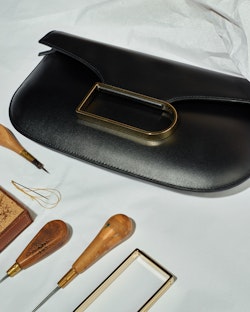The Oldest Fine Leather Goods House in the World
Founded in 1829, Delvaux is a truly Belgian brand. In fact, it was even born before the Kingdom of Belgium, which was only established one year later, in 1830.
Created in Brussels by the innovative Charles Delvaux, la Maison has remained at the forefront of luxury leather goods for nearly two centuries because of its savoir-faire, uncompromising craftsmanship and the outstanding quality of its creations.


A Visionary Soul
By 1875, Belgium had the highest density of rail networks in the world. Visionary and pragmatic, the Brussels-based luggage maker foresaw the travel revolution approaching. Realising that women would want to keep their precious belongings at hand during their travels, Delvaux filed its first patents for handbags in 1908.

La Maison Delvaux was granted the title of ‘Purveyor to the Court’ in 1883.

Hostesses wearing Delvaux bags at the 1958 Brussels World’s Fair
An Exceptional Mastery
In 1933 Franz Schwennicke takes over the business. Delvaux becomes an exclusive brand and is the first to introduce seasonal collections, mirroring the practices of Haute Couture.
Under his direction and then later that of his wife, Solange, Delvaux produces countless masterpieces. The ateliers of Brussels and France produce handbags that stand out in the history of leather goods, such as the ‘Brillant’, created for the Brussels World Fair in 1958.

An Unconventional Spirit
Steeped in the spirit of Belgian surrealism, la Maison Delvaux brings a witty approach to all its creations, infusing each design with an unconventional and original touch.
The first luxury leather goods house in the world is unlike any other. In the hands of its highly skilled leather artisans, Delvaux bags become genuine works of art.


The ‘Livre d’Or’
Delvaux has a long and rich history. More than 3,000 handbag designs have been created since 1829. To this day, every new creation continues to be described, sketched and catalogued in Delvaux’s Golden Book, the “Livre d’Or”.








